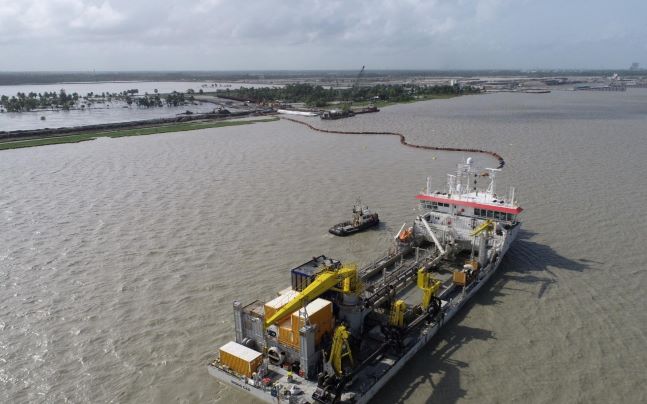Jan De Nul commences $500 million capital dredging for Bangladeshi Port

Photo Credit: Jan de Nul
Capital dredging works of the main navigation channel of Bangladesh's third largest seaport, Payra port have begun and are on track to be completed by June 2023. The dredging work which is being carried out by Jan De Nul will see the creation of a 75km long, 100 to 125m wide, and 10.5m deep channel, totalling $500 million.
The Rabnabad Channel once completed will allow access by 3,000 TEU-sized container vessels and 40,000 tonne-sized bulk cargo vessels, making the port operational for international trade. Dredging works are being funded by the Bangladesh government through its foreign currency reserve.
The dredging campaigns are part of continuous development operations to improve Payra Port, with the capital dredging being the second phase of Jan De Nul’s involvement. Previously, the Belgian contractor dredged the initial opening of the Rabnabad Channel to a depth of 6.3m to allow for increased sea-bound activities in and out of the port.
A fleet of dredgers has been mobilised by Jan De Nul at the project site with Trailing Suction Hopper Dredger (TSHD) Diogo Cão, De Lapérouse, and Francesco di Giorgio commenced work already whilst several more TSHDs are currently being mobilised. Additionally, two of the company’s largest Cutter Suction Dredgers (CSD) JFJ De Nul and Ibn Battuta recently started dredging works in the port to assist the other dredgers to complete works on time.
Payra port is also constructing a port terminal which will cost approximately $450 million and will be able to accommodate three container or cargo vessels at a time. The terminal is set to be operational by December 2023. Future port expansion plans consist of two additional container terminals.
While the advice given in this editorial content has been developed using the best information available, it is intended purely as guidance to be used at the user’s own risk. No responsibility is accepted by CEDA or by the Intent Communications Ltd or by any person, firm, corporation or organisation who or which has been in any way concerned with the furnishing of information or data, the compilation, publication or any translation, supply or sale of this Guidance for the accuracy of any information or advice given herein or for any omission herefrom or from any consequences whatsoever resulting directly or indirectly from compliance with or adoption of guidance contained therein even if caused by a failure to exercise reasonable care.